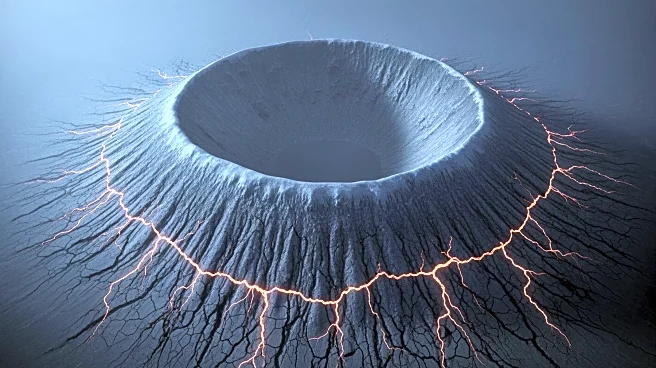What's Happening?
A study led by Xing Tan, a doctoral researcher at Stanford University, has mapped over 54,000 earthquakes at Italy's Campi Flegrei volcano since 2022, uncovering a ring-shaped fault. This fault outlines
a collapsed volcanic basin and channels stress, influencing earthquake locations. The discovery provides a clearer understanding of the volcano's structure, linking recent seismic activity to this fault. The study utilized machine learning to analyze seismic data, revealing tiny signals missed by traditional methods. The findings highlight the potential for stronger earthquakes in the area, which has a history of significant seismic activity.
Why It's Important?
The identification of the ring fault at Campi Flegrei is crucial for assessing the seismic risk in the region, which includes densely populated areas. Understanding the fault's structure allows scientists to better predict potential earthquake activity and its impact on local communities. The use of AI in seismic monitoring represents a significant advancement in the field, offering more accurate and timely data analysis. This technology can be applied to other volcanic regions, improving global earthquake preparedness and response strategies. The study emphasizes the importance of integrating advanced technologies in natural disaster risk management.












